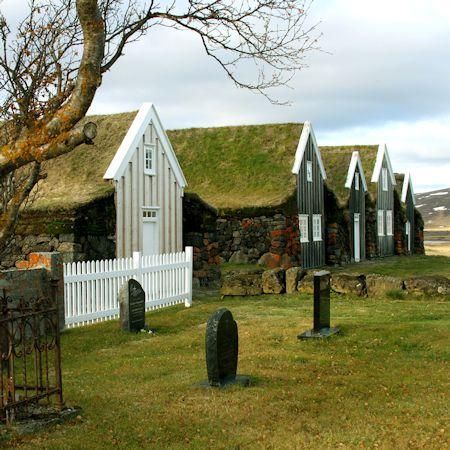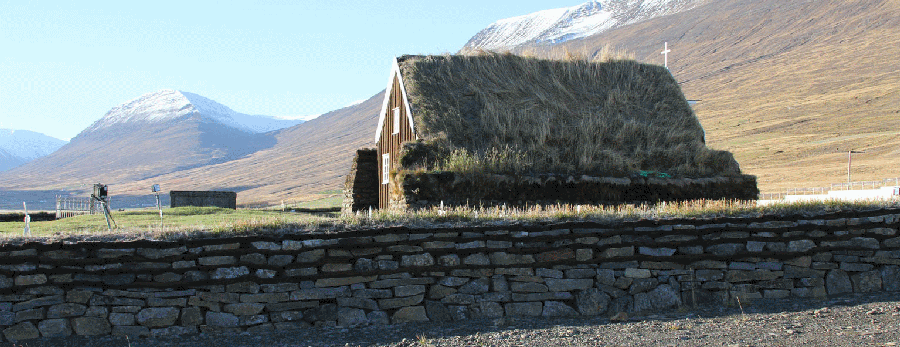
|
LARGE TURF HOUSES
Turf buildings are constructed of wood, turf and rock. The interior frame, roof and interior fittings are built of wood, while thick outer walls of turf and rock provide insulation and protection from the elements. The roof is turfed. The availability of these building materials varied; in some areas rock was more plentiful, in others turf, and this is reflected in the composition of the walls. Some buildings use far more timber than others, as it was expensive and often hard to come by. Turf buildings of all shapes and sizes have been built, rebuilt and abandoned all over rural Iceland ever since the settlement of the country around 900 AD: first longhouses and halls, then smaller buildings as the climate grew colder. The final type of house was a series of interconnecting buildings, with a row of wooden gables. Only a handful of such farmhouses remain standing more or less in their original form. Most are in the north where the drier climate is more favourable. Icelandĺs oldest extant building is a longhouse at Keldur, Rangßrvellir, where the farmhouse has stood on the same spot since the 11th century. It is the only extant longhouse (hall) in Iceland. Other turf houses in the south include a composite at the Skˇgar Heritage Museum, the ┴rbŠr farmstead in ReykjavÝk, around which a museum of historic buildings has been collected, and two buildings at Sel in Skaftafell in the Vatnaj÷kull National Park. The major turf houses in the north are at GlaumbŠr, Laufßs, Grenjaarstaur, Ůverß and Bustarfell. At Hˇlar in Hjaltadalur is a smaller turf farmhouse. Many more turf buildings can still be seen all over the country ľ old houses and farm buildings. All are part of Icelandĺs rich cultural heritage. Courses in turf construction are now offered, in order to maintain this ancient building tradition. In Ůjˇrsßrdalur is ŮjˇveldisbŠrinn, a replica of the medieval longhouse at St÷ng, laid waste in an eruption in 1104. It was built in 1974 to mark the millennium of the settlement of Iceland. Iceland's unique turf-building tradition is under consideration for the UNESCO World Heritage List.
Back to BOOKS
|


